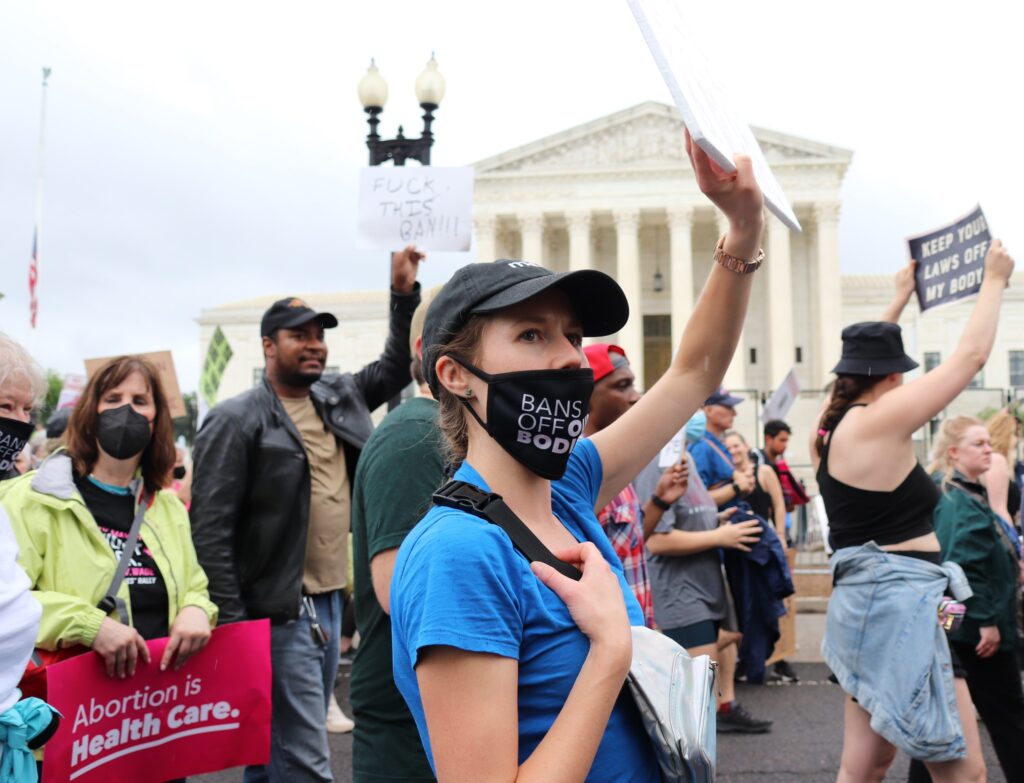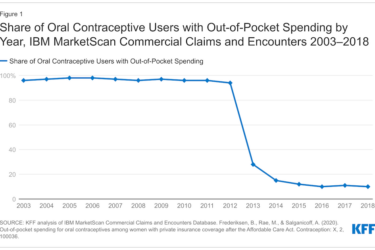
The U.S. Supreme Court (SCOTUS) handed down its expected decision in the highly anticipated Dobbs v. Jackson Women’s Health Organization case Friday morning, finding no constitutional basis for abortion.
The court, voting 6-3, now leaves the issue to state governments. Missouri was the first state to execute its trigger ban, prohibiting all abortion in the state.
The decision to overturn the right to abortion upends a precedent established in 1973 and re-affirmed in 1992, as Amy Howe reported for SCOTUS blog. “In one of the most anticipated rulings in decades, the court overturned Roe, which first declared a constitutional right to abortion in 1973, and Planned Parenthood v. Casey, which re-affirmed that right in 1992.”
Journalists should note that Howe reported the vote as 5-4, writing this: “The vote to overturn Roe was 5-4. Justices Clarence Thomas, Neil Gorsuch, Brett Kavanaugh, and Amy Coney Barrett joined Alito’s opinion. Chief Justice John Roberts did not join the opinion. He agreed with the majority that the Mississippi abortion restriction at issue in the case should be upheld, but in a separate opinion, he argued that the court should not have overturned Roe.”
At The New York Times, Adam Liptak wrote that the decision will transform American life, reshape the nation’s politics and lead to all but total bans on the procedure in about half of the states. “The ruling will test the legitimacy of the court and vindicate a decades-long Republican project of installing conservative justices prepared to reject the precedent, which had been repeatedly reaffirmed by earlier courts,” he added. Also, the decision will be one of the legacies of former President Donald J. Trump, who named three justices who were in the majority, he noted.
The decision upholds a restrictive Mississippi law that makes most abortions illegal after 15 weeks of pregnancy, about two months earlier than Roe and later decisions allow, according to Adeel Hassan of The New York Times.. Most experts estimate fetal viability to be at about 24 weeks.
The court’s opinion was slightly different from the version leaked weeks ago. Written by Justice Samuel Alito, the decision on Friday states: “Roe was egregiously wrong from the start. Its reasoning was exceptionally weak and the decision has had damaging consequences.”
Also, Alito added, “And far from bringing about a national settlement of the abortion issue, Roe and Casey have enflamed debate and deepened division. The Constitution makes no reference to abortion, and no such right is implicitly protected by any constitutional provision… It is time to heed the Constitution and return the issue of abortion to the people’s elected representatives.”
The court’s liberal justices, Sonia Sotomayor, Elena Kagan and Stephen Breyer, who is retiring at the end of this term, wrote a strongly worded dissent.
“One result of today’s decision is certain: the curtailment of women’s rights, and of their status as free and equal citizens,” Breyer wrote on behalf of all three dissenting justices. “Yesterday, the Constitution guaranteed that a woman confronted with an unplanned pregnancy could (within reasonable limits) make her own decision about whether to bear a child, with all the life-transforming consequences that act involves. … But no longer. As of today, this court holds, a state can always force a woman to give birth, prohibiting even the earliest abortions.”
Physician groups decry the decision
At the New England Journal of Medicine, the editors published an editorial Friday titled, “Lawmakers v. The Scientific Realities of Human Reproduction.”
“Experience around the world has demonstrated that restricting access to legal abortion care does not substantially reduce the number of procedures, but it dramatically reduces the number of safe procedures, resulting in increased morbidity and mortality,” the editors wrote. “Millions of persons in states lacking protections for abortion care are also likely to be denied access to medication-induced abortions.”
The editors also noted that before Roe was decided in 1973, women seeking illegal abortions faced humiliating circumstances, unsafe procedures performed in back alleys, deep shame and stigma, according to an opinion article, “Before Roe,” by Lauren Kelley, a member of The New York Times editorial board and photographer Ilana Panich-Linsman. “Common complications of illegal procedures included injury to the reproductive tract requiring surgical repair, induction of infections resulting in infertility, systemic infections, organ failure and death,” the editors added. “We now seem destined to relearn those lessons at the expense of human lives.”
In a statement on the decision, Iffath A. Hoskins, M.D., president of the American College of Obstetricians and Gynecologists, said ACOG condemned this decision, which will allow state governments to prevent women from living with autonomy over their bodies and their decisions. ACOG and more than 20 medical professional societies had filed a friend-of-the-court brief supporting the right of women to abortion.
“Today’s decision is a direct blow to bodily autonomy, reproductive health, patient safety and health equity in the United States,” Hoskins wrote. “Reversing the constitutional protection for safe, legal abortion established by the Supreme Court nearly fifty years ago exposes pregnant people to arbitrary, state-based restrictions, regulations, and bans that will leave many people unable to access needed medical care. The restrictions put forth are not based on science nor medicine; they allow unrelated third parties to make decisions that rightfully and ethically should be made only by individuals and their physicians.”
American Medical Association President Jack Resneck, Jr., M.D., characterized the decision as deeply disturbing and “representing an egregious allowance of government intrusion into the medical examination room, a direct attack on the practice of medicine and the patient-physician relationship, and a brazen violation of patients’ rights to evidence-based reproductive health services.”
The decision also increases health disparities, Resneck added. “Access to legal reproductive care will be limited to those with the sufficient resources, circumstances, and financial means to do so — exacerbating health inequities by placing the heaviest burden on patients from Black, Latinx, Indigenous, low-income, rural, and other historically disadvantaged communities who already face numerous structural and systemic barriers to accessing health care,” he wrote.
Journalists should note that the court’s decision does not necessarily reflect the opinions of most Americans, as the Pew Research Center reported in May. “Nearly one-in-five U.S. adults (19%) say that abortion should be legal in all cases, with no exceptions,” the Pew research showed. “Fewer (8%) say abortion should be illegal in every case, without exception. By contrast, 71% either say it should be mostly legal or mostly illegal, or say there are exceptions to their blanket support for, or opposition to, legal abortion.”
Other health care rulings
On Tuesday (June 21), the court issued a decision in a case involving health insurance for dialysis patients (Marietta Memorial Hospital Employee Health Benefit Plan et al. v. Davita Inc. et al.). In the Marietta case, the court ruled 7-2 that a group health plan in Ohio didn’t violate federal law by offering limited coverage for outpatient dialysis in a case that DaVita brought. DaVita Kidney Care and Fresenius Kidney Care are the nation’s two largest dialysis providers.
The ruling could allow employers to change their health benefits offerings in a way that could cause workers whose kidneys are failing to drop their employer-sponsored health insurance to join Medicare, as Bob J. Herman reported for STAT News. “Patients with kidney failure face a murky future if they have insurance coverage through a job, as the Supreme Court on Tuesday said employer health plans can make all dialysis providers out-of-network,” he wrote. Medicare provides health insurance for Americans 65 and older and for those whose failing kidneys have caused end-stage renal disease.
Last year, STAT News published an opinion piece from researchers at the University of Southern California’s Schaeffer Center and the Brookings Institution that explained how DaVita and Fresenius have used the health insurance system to dominate the U.S. dialysis market: “Congress should end dialysis companies’ third-party games with insurance coverage.”
At Vox, Ian Millhiser had a more troubling take on the ruling. He cited the dissenting opinion from Justice Elena Kagan, who warned that the decision could have ominous implications for victims of anti-LGBTQ and religious discrimination. “Read broadly, the Marietta decision could provide both government entities and private businesses with a workaround they can use to avoid triggering anti-discrimination laws — even as they engage in unlawful discrimination,” Millhiser wrote.
Ruling on weed killer and cancer risks
Also, on Tuesday, SCOTUS let stand a $25 million dollar verdict against the manufacturer of the weedkiller Roundup for failing to warn of cancer risks, as Ann E. Marimow reported for The Washington Post.
The decision in the case of Monsanto Company v. Hardeman clears the way for thousands of lawsuits against Bayer that are similar to one that Edwin Hardeman filed after he was diagnosed in 2015 with non-Hodgkin’s lymphoma, she wrote. In his suit, Hardeman charged that Monsanto, which produced the herbicide, failed to warn of the cancer risks associated with glyphosate, an ingredient in the weedkiller, she added. Hardeman also alleged that his use of Roundup for over two decades had caused his cancer. Bayer acquired Monsanto in 2018.
The Biden administration had urged the court to deny the company’s request, a departure from the Trump administration’s position.
In a statement Bayer said that it disagreed with the court’s decision and was “confident that the extensive body of science and consistently favorable views of leading regulatory bodies worldwide provide a strong foundation on which it can successfully defend Roundup in court when necessary.”
Decision not to review public charge rule
On June 15, the justices threw out a case that Arizona and 12 other states with Republican attorneys general brought in their attempt to defend an immigration policy known as the public charge rule issued during the Trump administration. As Amy Howe explained for the SCOTUS blog, the rule can be used to make immigrants ineligible for green cards if the government believes they would rely heavily on certain government aid, such as Medicaid or food stamps. In an unsigned ruling, the justices dismissed the case, Arizona v. City and County of San Francisco, saying the case was “improvidently granted.” This procedural move is unusual, Howe wrote, and means the court concluded it was incorrect to have considered the dispute in the first place.
In March 2021, the Biden administration stopped enforcing the public charge rule, and the court’s decision dealt a blow to the conservative states’ attempts to revive the policy, she added.







